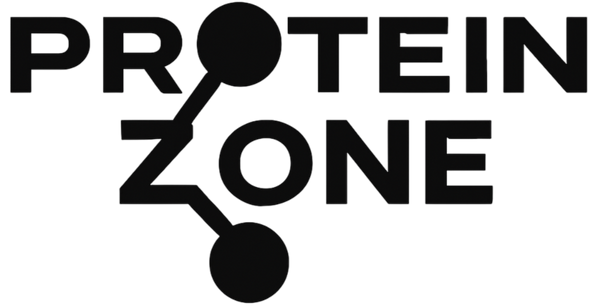Magnesium Glycinate
Magnesium glycinate is a modern expression of an ancient practice: using mineral-rich sources to calm the body and restore balance. Greek and Roman traditions prized warm mineral springs for their soothing effect on tense muscles and overworked minds. Across Europe and the Middle East, magnesium-containing salts and clays were used for bathing and digestive comfort. The glycine component adds its own history—once abundant in collagen broths and marrow-rich foods—valued for their ability to nourish, relax, and rebuild.
Magnesium sits at the heart of energy production. More than three hundred enzymes require it to convert food into ATP, the cellular currency that powers movement, thinking, and repair. It helps muscles release after contraction, steadies the heartbeat, supports nerve signaling, and helps regulate the GABA system linked with calm focus and healthy sleep-wake rhythms. Binding magnesium to glycine improves tolerance and gentle absorption, making this form comfortable for those who find other salts too intense.
Today, people choose magnesium glycinate to support nighttime wind-down, smooth post-training recovery, and maintain daylong steadiness under stress. It pairs well with a nutrient-dense diet rich in leafy greens, nuts, seeds, and legumes, and with consistent sleep and light habits that train the body toward deeper rest and better mornings.
These statements have not been evaluated by the Food and Drug Administration. This product is not intended to diagnose, treat, cure, or prevent any disease.
Purchase Magnesium Glycinate HERE
DETAILED INGREDIENT LIST
MAGNESIUM (FROM 2,500 MG MAGNESIUM GLYCINATE)
Introduction & History:
Magnesium is an essential mineral involved in hundreds of biochemical reactions in the human body. Magnesium glycinate is a highly bioavailable, chelated form, created by binding magnesium to the amino acid glycine. Chelated minerals have been used for decades to improve absorption and gastrointestinal tolerance compared to inorganic forms such as magnesium oxide.
Molecular Function & Mechanism:
Magnesium serves as a cofactor for over 300 enzymatic reactions. It plays critical roles in energy metabolism through ATP synthesis, protein and DNA formation, nerve transmission, muscle contraction and relaxation, and regulation of blood pressure. The glycinate form enhances absorption and is gentle on the digestive tract. Glycine itself may provide additional calming and sleep-supportive effects.
Modern Use & Theory:
Magnesium glycinate is widely used to support muscle function, cardiovascular health, stress management, relaxation, and sleep quality. Its gentle profile makes it a preferred form for daily supplementation.
HYPROMELLOSE (CAPSULE)
Introduction & History:
Hypromellose, also called hydroxypropyl methylcellulose (HPMC), is a cellulose-derived material developed as a plant-based alternative to gelatin. It has been used in supplement manufacturing for decades.
Molecular Function & Mechanism:
Hypromellose forms a stable capsule shell that contains powdered or liquid ingredients. It is inert, safe, and dissolves readily in the digestive tract, releasing the active ingredients without interfering with absorption.
Modern Use & Theory:
Primarily used to provide vegetarian-friendly capsules that deliver supplements efficiently and consistently.
MAGNESIUM STEARATE
Introduction & History:
Magnesium stearate is a compound of magnesium and stearic acid. It has been used safely in food and supplement manufacturing for many years.
Molecular Function & Mechanism:
In manufacturing, it serves as a flow agent, ensuring powders move smoothly through equipment and preventing ingredients from sticking. It does not alter the activity of nutrients and is included only in minimal amounts.
Modern Use & Theory:
Used to guarantee quality and consistency in capsules and tablets, helping ensure accurate dosing and smooth production.
SILICON DIOXIDE
Introduction & History:
Silicon dioxide, commonly referred to as silica, is one of the most abundant natural compounds, found in quartz and plant-based sources. It has been used for decades as a safe additive in food and supplements.
Molecular Function & Mechanism:
Silicon dioxide functions as an anticaking agent, preventing powders from clumping and allowing for even, consistent dosing. It is physiologically inert and passes safely through the digestive tract without being absorbed in significant amounts.
Modern Use & Theory:
Used in supplements to stabilize formulations, ensuring capsules and powders remain smooth and free-flowing during production and storage.
RICE FLOUR
Introduction & History:
Rice flour is produced by finely milling whole rice grains. It has been used for centuries as a staple food ingredient and is now commonly included in supplement formulations as a natural filler.
Molecular Function & Mechanism:
In supplements, rice flour functions as an excipient, or inactive ingredient. It adds bulk to capsules, ensuring proper filling and accurate dosing. It is hypoallergenic, gluten-free, and easily digestible.
Modern Use & Theory:
Rice flour is used for its technical role in supplement manufacturing, helping provide consistency in capsule size and weight without altering the function of the active ingredients.
